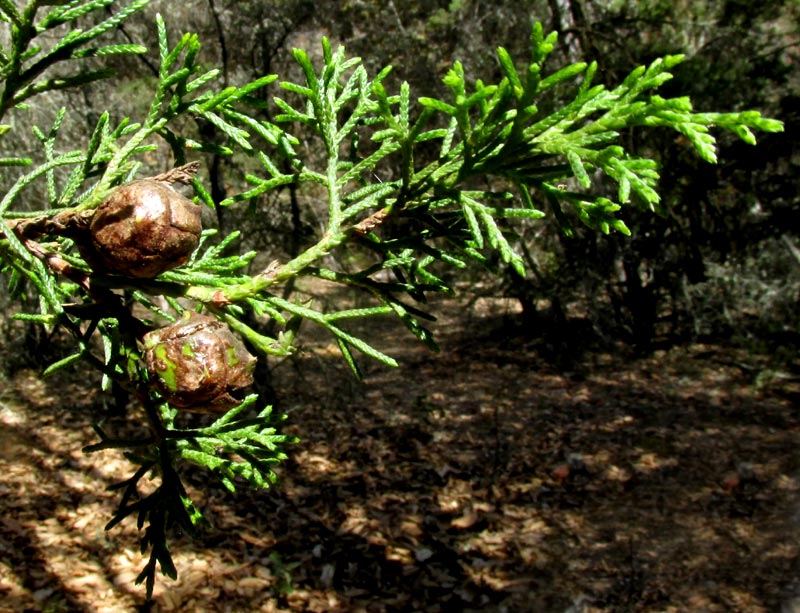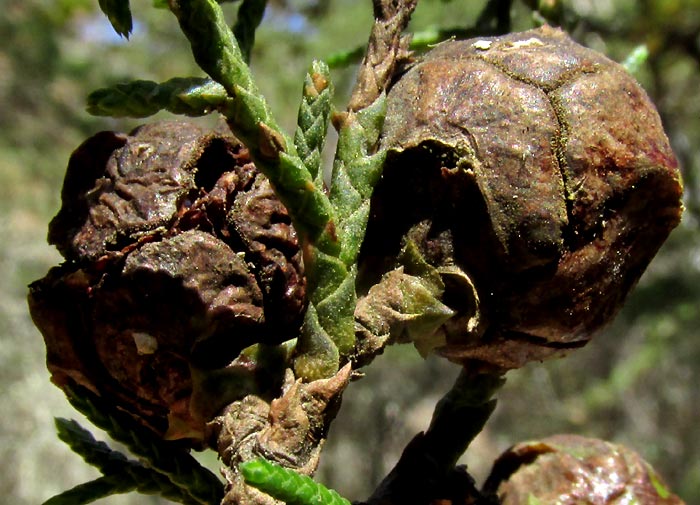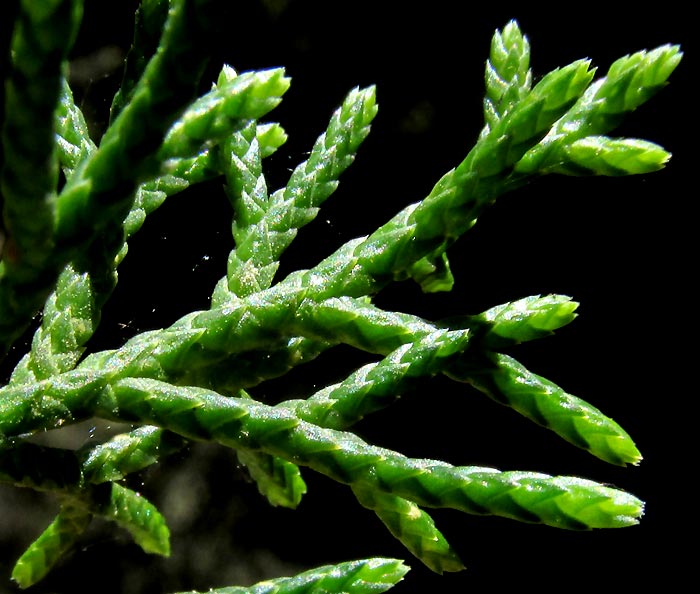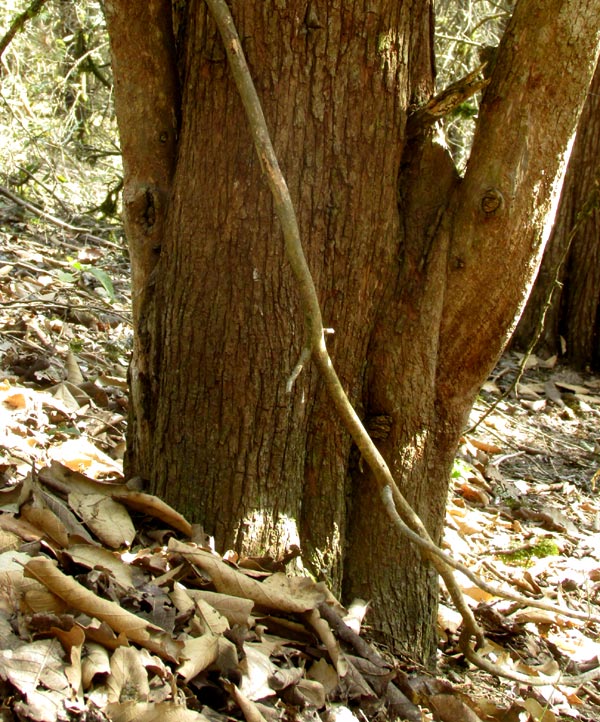Excerpts from Jim Conrad's
Naturalist Newsletter
entry from field notes dated April 14, 2022, taken in disturbed/reforesting borderline cloudforest within 1km of Valle de los Fantasmas, elevation ±2,320m (7600 ft), with limestone bedrock; about 40kms (24 miles), straight-line, ESE of San Luis Potosí, San Luis Potosí state, MÉXICO, (N22.06°, W100.62°)
A MEXICAN CEDAR PLANTATION

Looking for a spot to camp overnight, I climbed toward a densely forested patch on the much-disrupted landscape. The patch turned out to be Mexican Cedars, CUPRESSUS LUSITANICA*, closely planted in ranks and files, maybe 25 years ago, on a steep slope. It looked like the whole mountain had been completely deforested, then Mexican Cedars were planted to bring the resulting, inevitable erosion under control. Now the plantation was shadowy and cool, with the soil stabilized by tree roots and a blanket of slowly composting leaf-litter and fallen twigs. A few young oaks and pines were getting reestablished in what once -- judging from abundant lichens and mosses on the trees' limbs and trunks -- must have been a borderline cloudforest.
At first I'd assumed that the trees were junipers, but then I noticed the brown, spherical seed cones appearing in the above picture. Juniper seed cones, genus Juniperus, are fleshy and don't split open at maturity. These cones are woody, and other more mature cones were splitting apart, as the cone on the left is doing below:

Bearing cones instead of fruits typical of flowering plants, and with leaves manifesting as overlapping scales, our tree was a good example of members of the gymnosperm Cypress Family, the Cupressaceae. That family consists of about 16 genera and something like 150 species, occurring mostly in the world's Temperate Zones. Though several members of the family are planted in Mexico as ornamentals, only juniper species and our Mexican Cedars are native Mexican Cypress Family members still living in the wild.
Another difference between Mexican Cedars, genus Cupressus, and junipers is that juniper seeds are more or less egg-shaped or conical, somewhat tending toward a triangular shape, and don't bear fin-like "wings," while Mexican Cedar seeds are flattish and do produce sharp-edged wings, as shown below:

Mexican Cedar's overlapping, scale-like leaves arising opposite one another in 4 ranks, though, can be confused with juniper twigs and stems, as shown below:

Mexican Cedars can grow up to 40m tall (130ft). Below you see our tree's thick, reddish-brown bark, with typical longitudinal fissures.

Here in Mexico's Eastern Sierra Madre mountains, two species of Cupressus can be found. The other is the Arizona Cypress, Cupressus arizonica, distributed from the arid southwestern US south through upland northern Mexico into northern San Luis Potosí state. Arizona Cypress differs from Mexican Cedar by having silvery, or "glaucous," foliage, while Mexican Cedar foliage is deep green. Mexican Cedar is somewhat at its northern extreme of distribution here in central San Luis Potosí state, extending south in the highlands into Guatemala and Honduras. Despite tremendous habitat destruction, Mexican Cedars aren't considered to be an endangered species, mainly because they're planted extensively as ornamentals, for erosion control and for timber. The species can be easily grown and cultivated.
In fact, Mexican Cedar's species name, lusitanica, derives from the name of Lusitania, which was a Roman province consisting of what is now Portugal and part of Spain, created over 2000 years ago and lasting until the Islamic invasion in the early 700s. Our tree got the name because around 1634 it was introduced from Mexico into the monastery of Buçaco in Portugal, the former Lusitania. From there seeds were sent to many places. When the English botanist Philip Miller got around to formally describing the species 130 years later, to him the species was from Lusitania, not Mexico.
The Mexican Cypress's woody cones constitute an important part of the species' ability to survive. They may open at maturity after one season of growth, or remain closed for several years, only to open after the parent tree has been killed by fire. Then the seeds colonize the bare ground and start the forest all over again.